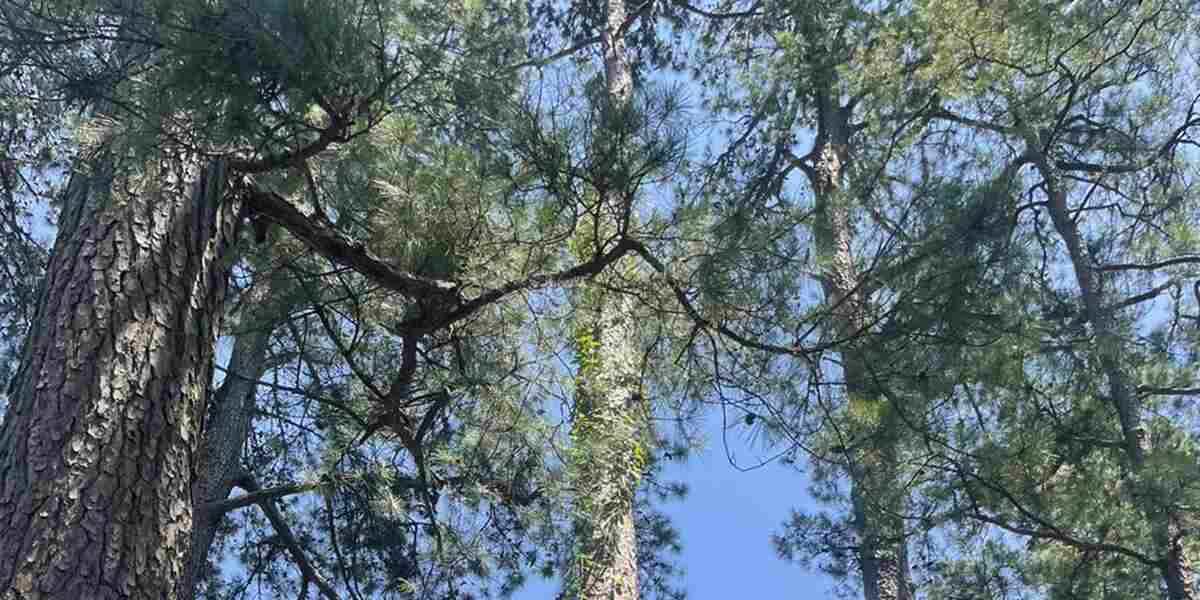What is a dormant tree? Whether you have trees in your yard or simply love nature, you’ve probably asked yourself this question at least once.
As Hope’s reliable tree service provider, our tree care experts at Hawkins Tree and Landscaping delve deeper into the mystery of tree dormancy. Keep reading as we explore seasonal tree changes and highlight the differences between a dormant tree and a dead one.

What Is Tree Dormancy?
Trees go dormant as a survival strategy. When the days grow shorter and temperatures dip, trees slow down their growth and metabolic activity to prepare for winter. This hibernation allows them to conserve resources and protect themselves from harsh winter temperatures.
Come spring, dormant trees gradually resume their usual metabolic activity and gear up for the growth phase. Different plant species wake up from dormancy at different rates.
Symptoms of Dormancy
Stay alert for the following symptoms of a tree entering the dormant stage:
- Bare branches
- Reduced growth
- Rapid leaf color changes
- Bud development
You’ll notice most of these symptoms in deciduous trees. Evergreens, like conifers, have a special way of dealing with dormancy. Their needles feature a tough, waxy coating that allows most of them to maintain their green color throughout winter.
For a deciduous tree, you may find it challenging to discern whether it’s dormant or dead.
Dormant vs. Dead Trees
What is a dormant tree? If one of your trees doesn’t burst with life once the seasons change, check it out sooner rather than later. The following tests can come in handy when identifying dormant trees.
The Scratch Test
Use a knife to scrape off a small section of the bark. The layer under the bark of a dormant tree will appear green and moist. A brown and brittle interior confirms the death of at least that part of the tree. Test several areas and call a certified arborist if most sections of the tree seem dead.
Observe How Leaves Drop
Healthy, dormant trees shed their leaves in a uniform pattern. Your tree may have an issue if the leaves drop erratically or cling to the branches even after they dry out.
Look at the Buds
Trees produce new buds even during the dormant stage. Buds typically vary in color from one tree species to another. Nonetheless, a dead tree will not produce any buds.
Inspect the Bark
A healthy tree will shed its bark and replace it. If you notice a tree struggling to regenerate its bark, it probably has health issues or it’s on its last legs.
Assess Flexibility
Find a small branch and bend it. A flexible and springy branch shows proof of life. If the branch snaps, you probably have a dead tree on your hands.
Remember, different trees have varying levels of flexibility and winter tree characteristics. Don’t expect similar behavior across the board. You also want to exercise proper tree care in winter to improve your trees’ chances of survival.
When in doubt, always seek professional help. A certified arborist will inspect your tree and point you in the right direction.
Trust Your Local Tree Experts
While you can answer the question, “What is a dormant tree?” you may still need someone to help with tree care. At Hawkins Tree and Landscaping, we have a passion for arboriculture. Our competent tree care experts offer tree care services such as:
- Tree trimming and pruning
- Tree removal and land clearing
- Emergency tree services
- Storm damage cleanup
Call Hawkins Tree and Landscaping at (870) 330-9912 to request a free quote for tree service in Hope, Arizona. Explore our blog to learn about the causes of large holes in tree trunks.

